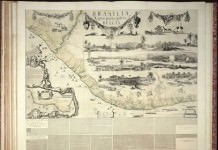Following rumors of reduced access to the British Library’s printed books collections in the course of its digitization program (including archiving or even destruction of some physical copies), I sent in questions to the British Library’s information service. They replied under the UK Freedom of Information Act as follows:

TeleRead: Does the BL currently have any policy of changing the preservation status or accessibility of books once scanned?
British Library: The British Library does not have a comprehensive policy of changing the preservation status or accessibility of books once scanned. Collection items are not allocated a “preservation status” as such but will have a classification (decided by the individual collection department) that reflects the item’s value, significance and rarity. This may also include access restrictions. The Collection Care department will advise on the use and accessibility of items including whether items are suitable for digitisation in the first place.
An item’s status or accessibility may be changed by the curator where a suitable surrogate is available, especially where an item’s condition is judged to be fragile, but this is not done as a matter of course. The purpose of digitisation is not to remove access to collections.
Repeated use of an item, even careful use, can lead to wear and tear over time, so accessing a copy rather than the original item can reduce use and help preserve collection items over time. For this reason, where possible and subject to resources being available, high value, culturally significant, highly used, popular items or physically vulnerable items are digitised to enable access to a high quality digital version rather than the original where possible.
While digitised content may address the needs of many users, there is no intention to remove access to original items where this is needed to address a researcher’s individual questions. Some users need to see original items: for example, users may need to see original binding constructions and materials or specific print editions to understand or gain more understanding i.e. to see characteristics that are not visible or understandable from an image.
TR: Has such a policy ever been proposed either internally or by outside bodies?
BL: Yes, the British Library has discussed the proposal internally, especially in relation to its newspaper collections, which are due to move from their current site to new purpose-built storage facilities. Due to the vulnerability of these items, users will be directed to surrogates where these exist, once the move takes place. Collection Care advocates use of surrogates, whether digital, microfilm or physical, and would want readers to be directed to these in preference to the original item for the reasons above.
TR: Has book scanning at the BL made any difference to numbers of requests for physical consultation of books? To staffing levels in different departments?
BL: We do not collect the statistics to enable us to provide evidence of a correlation between scanning and the physical consultation of books. There has been no discernible impact of scanning activities on the levels of staffing required to support access to print collections. In general, we would expect that the creation of a digital or microfilm surrogate copy of a physical item would would lead to a reduction of usage of the print item. However, the creation of a digital copy can also lead to an increase in public awareness of that item, and the collection in which it is held, which can lead to an increase in demand to view the physical collections.
TR: How large in staff, budget and equipment is the BL’s current book scanning operation?
BL: The BL’s book scanning operation is staffed by 30 people, has a budget of GBP987,000 per year (including salaries) and operates 28 digital capture devices.

































